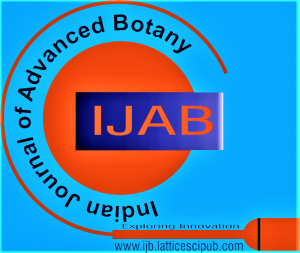![]()
The Current Status, Challenges and Ways of Conservation Efforts of Bio diversity in Ethiopia
Mesay Paulos
Mesay Paulos, Ethiopia Bio Diversity Institute, Assosa Biodiversity Centre, Crop and Horticulture Case Team, Assosa, Ethiopia.
Manuscript received on 09 July 2025 | First Revised Manuscript received on 12 August 2025 | Second Revised Manuscript received on 16 September 2025 | Manuscript Accepted on 15 October 2025 | Manuscript published on 30 October 2025 | PP: 1-10 | Volume-5 Issue-2, October 2025 | Retrieval Number: 100.1/ijb.B105605021025 | DOI: 10.54105/ijab.B1056.05021025
Open Access | Editorial and Publishing Policies | Cite | Zenodo | OJS | Indexing and Abstracting
© The Authors. Published by Lattice Science Publication (LSP). This is an open-access article under the CC-BY-NC-ND license (http://creativecommons.org/licenses/by-nc-nd/4.0/)
Abstract: Ethiopia is one of the richest centres in faunal, floral, and microbial diversity in the world. Conservation practices and policies have been variably successful in recent years. This review paper was initiated to assess the status of Biodiversity, threats, and conservation efforts in Ethiopia. The causes of biodiversity loss, including habitat destruction, invasive alien species, over-harvesting of biodiversity resources, and species homogeneity in agriculture, are all essential biological drivers of the loss of biological diversity. All of these factors share a commonality: they are all human-driven. More research is needed in this area. It is also debatable and questioned whether existing biodiversity-conservation strategies provide adequate responses to these core causes of biodiversity loss and are capable of effectively counteracting the loss of biodiversity-related cultural values, biological species, and ecosystems. Conservation of genetic resources may be warranted for future genetic improvement of plants and livestock. Through bio prospecting, which adds value to biodiversity by undertaking exploration, assessment, and conservation, the country will reap impressive economic, social, and cultural benefits. This review is relevant to the study area, which engages in participatory community-based management techniques, and sector-based conservation and integration should minimise biodiversity conservation loss, while also incorporating social, cultural, and economic considerations. Finally, the findings suggest that a widespread perception among local communities is that biodiversity is facing challenges. This implies that engaging with local communities and incorporating their perspectives in biodiversity and ecosystem conservation strategies is crucial for the adequate protection and restoration of biodiversity.
Keywords: Biodiversity, Bio Prospecting, Genetic Resources, Ethiopia.
Scope of the Article: Plant Biodiversity
